Male Short-eared Owl with a vole for the family
Red Rock Lakes NWR is simply a wonderful spot on this ol’ earth. Located in SW Montana about halfway between Yellowstone National Park on the East and Interstate 15 on the west, it lies in a beautiful high elevation valley and the setting is stunning. It’s not for the faint of heart though as the weather holds many potentially nasty surprises and the access to the refuge is primitive at best. But that’s one of the things I love about Red Rock. In late June we had the place mostly to ourselves, which is ideal for me. Coyotes howling, other mammals in abundance, birds plentiful, wildflowers galore, spectacular mountain scenery, amazing sunrises and sunsets, weather surprises, bad roads to limit visitation, isolation and especially those incredible Short-eared Owls. I love this place!
Female at the nest with one of two youngsters
On our second day there we found a pair of nesting Short-eared Owls with two youngsters. The nest was at the base of a sagebrush within a few feet of a road. I have a (very unscientific) theory as to why these birds would make their nest so close to a road with regular traffic. Coyotes are very common on the refuge – we heard them howling often and would see them but they were seldom close to any road. They seem to avoid roads whenever possible. A nest on the ground would be very vulnerable to coyote predation. So I wonder if the choice to build the nest so close to the road was a deliberate one, giving the nest some protection from coyotes.
The female and youngsters were often buried deep in the nest so I couldn’t see them, but one sunny morning the female and one baby came out far enough for the photo above. These owls were obviously very acclimated to vehicles and never seemed disturbed by them. All of my photographs of these owls were taken from within my pickup while it was parked on the road. I never approached the birds on foot or even got out of my vehicle. I would never risk disturbing nesting birds, of any species.
The male approaching the nest with breakfast
The female spent nearly all her time in the nest with the owlets while the male hunted voles (small rodents resembling mice). I could often see him hunting close to the ground and usually quite far away. As far as I could tell his prey was always voles. He was an excellent hunter and would always follow the same pattern – capture vole, return to the vicinity of the nest while carrying the vole in his talons, land on one of several favorite perches fairly close to the nest for a few minutes, transfer the vole from talons to beak and then take off to deliver the vole to the female at the nest. As a result, most of my photos of these owls are of the male carrying a vole. In the photo above, he is approaching the nest.
Coming in for a landing on a favorite sagebrush perch
In this image, the male is approaching the perch (a sagebrush in this case) near the nest. Notice that the vole is carried in the owls left talon. In reviewing all of my images of the male with a vole I noticed that he always carried it in the left talon. Without exception. Which got me to thinking about “handedness” in raptors. In doing some research on the subject it seems that many raptors and parrots in particular show “handedness”.
The impatient female retrieving her meal
Once, and only once, did I see the female carry a vole in flight. The male had brought the vole to one of the nearby perches but he waited longer than usual to deliver the vole to the nest and the female became impatient so she flew the short distance to the male, retrieved the vole from him and flew back to the nest with it. In the image above she’s on her way back to the nest. Not until I got home and processed the image did I notice that the females brood patch is clearly visible in the shot.
The sagebrush flats hunting territory of the owls
The sagebrush flat in the foreground is the hunting territory of these owls. For most of the time we were there the light for flight photography was very challenging – mostly cloudy, especially over the mountains. However, when light would hit an owl in flight with the dark mountains as a backdrop it made for an excellent background in some of the images, as in the opening shot in this post.
This is the scene looking over Lower Red Rock Lake from our camp site.
One last look at the male, delivering dinner to his family among the wildflowers. A very devoted father.
I really enjoyed this trip. The owls, the behaviors, the scenery, the photographs and just the experience – all priceless!
Ron



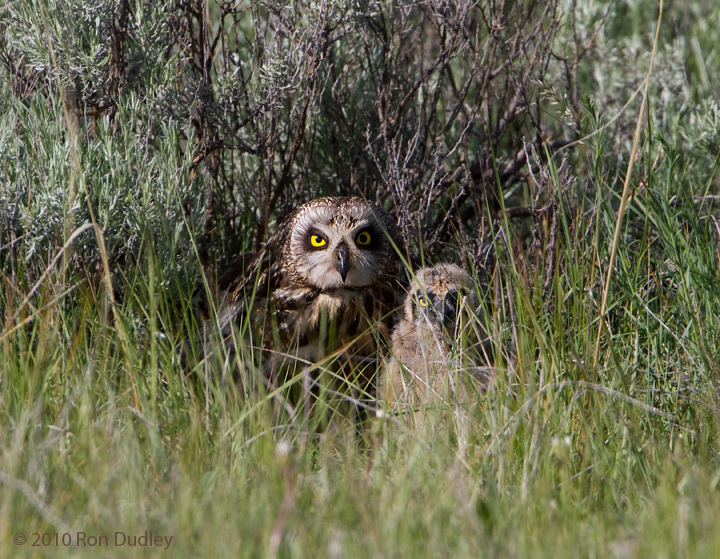

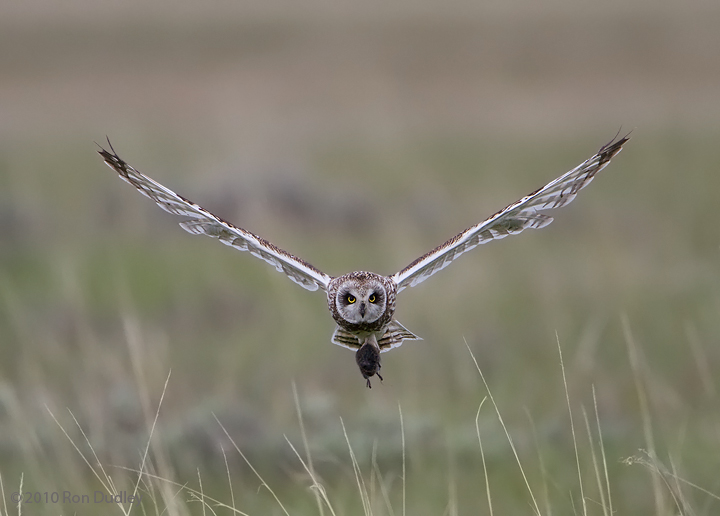
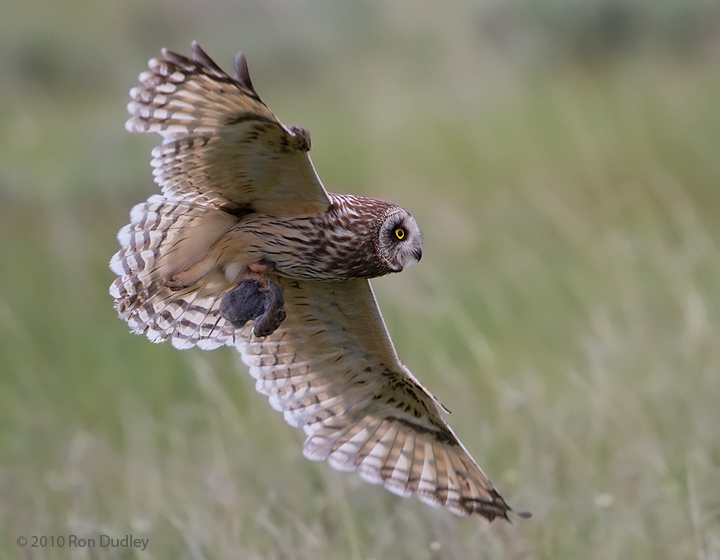

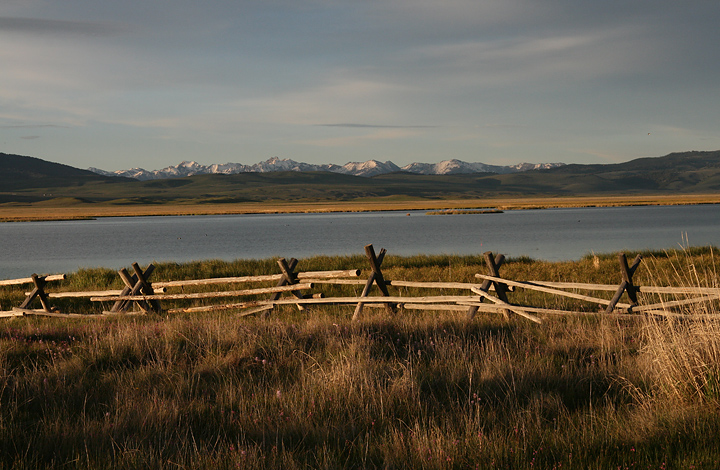
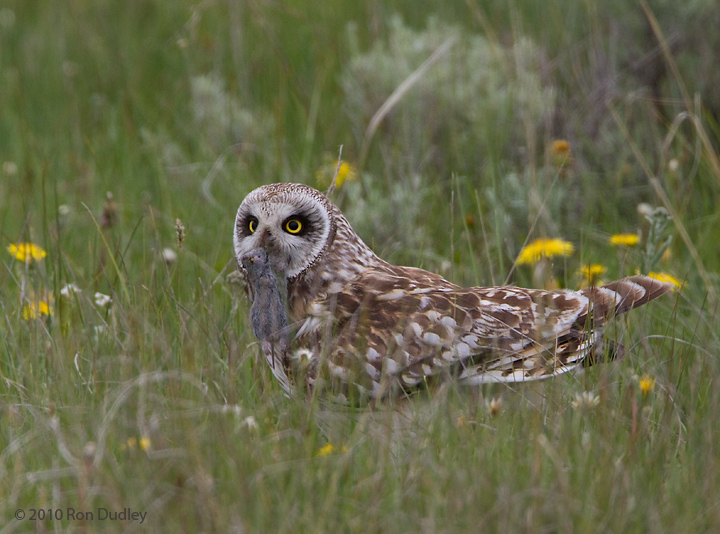
Wow, great series of photos, Red Rocks just jumped up on my list of places to go 😀
A fine series of images, and I’m glad to see the overview shots that put them in context.
I used to watch these birds hunting over the coastal marshes in New Jersey when I lived there, but only rarely got anywhere close to one. I envy your experience and am glad you’ve shared it with your audience.